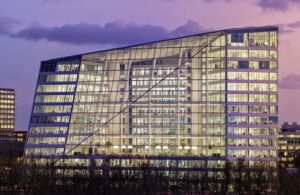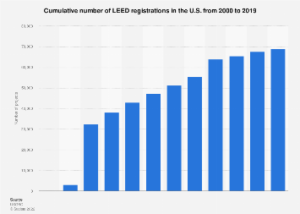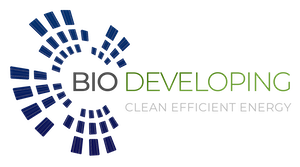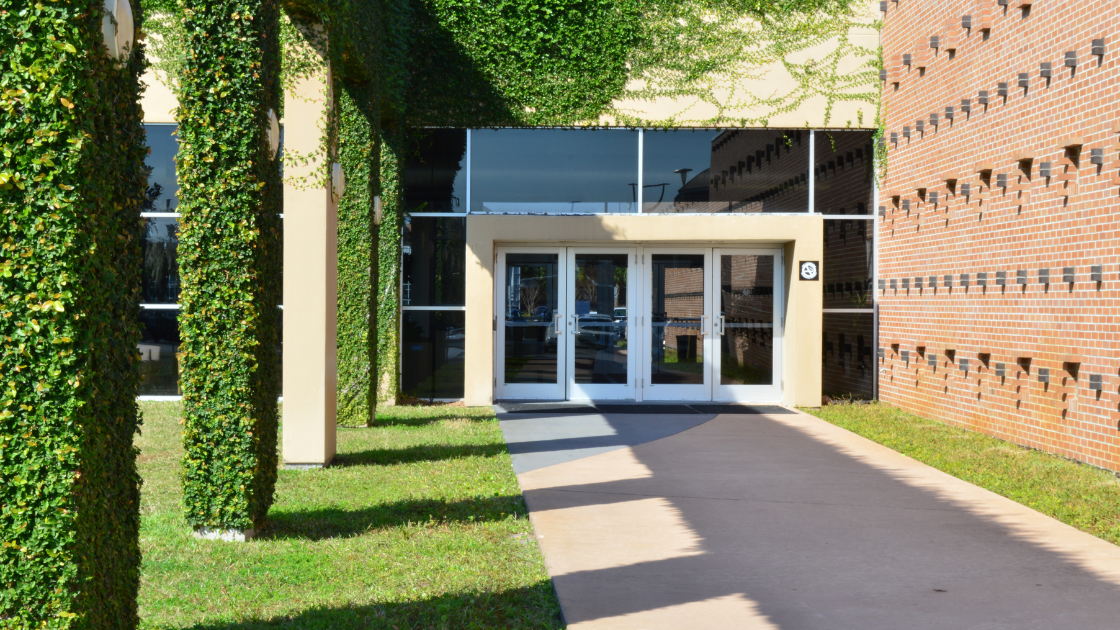What makes a building “green?”
As the demand for green buildings and sustainable practices increases, I decided to write another article on the subject of green buildings to cover it in more detail. Earlier this year I wrote an article, What Is a Green Building, to introduce the subject of green buildings and our involvement in helping design and retrofit buildings to be green, here at Bio Developing. In this article, I go into the details more.
Green Building Fun Fact: The Greenest Building in The World

Europe’s leading green building rating agency, BREEAM, gave the building a green building rating of 98.4%. The Edge’s 430,000 square feet use seventy percent less energy than normal buildings of the same size.
The building is powered by 65,000 square feet of solar panels that cover its roof and facade. The Edge is net energy positive, which means it produces more electricity than it consumes, and helps power a nearby university with its extra power.
The Edge also has powered LED lighting, uses rainwater for irrigation and for water throughout the building, and operates with a thermal energy system to heat and cool the building. The building’s computer continuously collects and monitors data to adjust and minimize the building’s carbon footprint through AI.
Today, people, businesses, and governments are becoming more and more aware of environmental preservation.
According to The Building Sector, an international architecture firm: “The built environment generates nearly 50% of annual global CO2 emissions. Of those total emissions, building operations are responsible for 27% annually, while building materials and construction (typically referred to as embodied carbon) are responsible for an additional 20% annually.”
They also predict that to accommodate the large wave of urban growth across the planet, the global floor area of buildings will double by 2060. That’s the equivalent of adding an entirely new New York City to the planet, every month until 2060.
This is why green buildings are so important. Thankfully, the construction of green buildings has become increasingly desirable and profitable. In fact, the green building market is anticipated to be one of the fastest growing industries within the next several years.
Green buildings are also profitable, producing ROI for owners and investors through the smart use of energy and resources. Also read, How Green Buildings Deliver Savings and Increased ROI for Owners.
Green Building Certification
So, what makes a building green?
A green building is a building that’s designed to reduce the overall impact on its direct natural environment and maintain the health of the people who occupy the building.
The concept of a green building refers to both, the building’s structure as well as the adoption and use of processes and systems that are themselves environmentally responsible. It also includes the efficient use of resources such as energy and water.
In a green building, all aspects from start to finish, are taken into consideration and weighed against the impact on the environment and its occupants – from planning and design to construction or renovation (for older buildings), to the building’s day-to-day operations, maintenance, and even demolition.
Making a building green, be it new construction or a retrofit, requires close cooperation with the contractor, architect, and engineer at all project stages.
The Leadership in Energy and Environmental Design (LEED) is an established green rating system for the design, construction or renovation, operation, and maintenance of green buildings.
Developed by the Green Building Council, the LEED helps to building owners and operators to be environmentally responsible.
What is LEED?

LEED certification
LEED is one of the most commonly used green building rating systems in the world. It is available for a wide variety of building project types and acts as a framework to guide healthy, energy-efficient, and cost-saving green buildings.
In order to earn the certification, the project must comply with mandatory prerequisites as well as various other optional credits. Several different types of rating systems have been implemented since the establishment of LEED, including the LEED for Homes Rating System, LEED energy modeling, and the basic LEED NC rating system.
Source: Statistica

Green buildings ensure that waste is minimized at every stage during the construction and operation of the building, resulting in low costs according to the experts in the technology.
For a building to be green, it must include:
- Efficient use of energy and water resources.
- Use of systems that help promote good health and comfort for occupants.
- Reducing the building’s waste, pollution, and any potential environmental degradation.
What Makes a Building “Green?”
A green building considers the entire building’s envelope and uses systems that work together to make the building “green.” Green buildings may incorporate sustainable building materials as well as ethical and sustainable sources for those materials. For example, reusable materials, recycled materials, or materials made from renewable resources.
Green buildings also create healthy enviornments with minimal pollution. This is achieved through reduce product emissions. The use of renewable energy and smart use of water is essential to reduce a building’s enviornmental impact.
Landscaping also plays a critical role in reducing a building impact. Through the use of native plants that survive well without needing additional water while also integrating with the local eco system.
A green building is a structure that is environmentally responsible and resource-efficient throughout its life-cycle. These objectives expand and complement the classical building design concerns of economy, utility. Durability and comfort.
Components of a green building include:
- Minimal disturbance to landscapes and site condition
- Use of non-toxic and recycled/recyclable material
- Efficient use of water and water recycling
- Use of energy-efficient and eco-friendly equipments
- Use of renewable energy
- Quality of indoor air quality for human safety and comfort
- Effective controls and building management systems
Green Building Specs
To provide more insights into green building basics and the key components in green buildings, I found very helpful guidelines from the California Recycling Department and thought it would be very helpful to include them in this article:
Siting
- Start by selecting a site well suited to take advantage of mass transit.
- Protect and retain existing landscaping and natural features. Select plants that have low water and pesticide needs, and generate minimum plant trimmings. Use compost and mulches. This will save water and time.
- Recycled content paving materials, furnishings, and mulches help close the recycling loop.
Energy Efficiency
- Passive design strategies can dramatically affect building energy performance. These measures include building shape and orientation, passive solar design, and the use of natural lighting.
- Develop strategies to provide natural lighting. Studies have shown that it has a positive impact on productivity and well being.
- Install high-efficiency lighting systems with advanced lighting controls. Include motion sensors tied to dimmable lighting controls. Task lighting reduces general overhead light levels.
- Use a properly sized and energy-efficient heat/cooling system in conjunction with a thermally efficient building shell. Maximize light colors for roofing and wall finish materials; install high R-value wall and ceiling insulation; and use minimal glass on east and west exposures.
- Minimize the electric loads from lighting, equipment, and appliances.
- Consider alternative energy sources such as photovoltaics and fuel cells that are now available in new products and applications. Renewable energy sources provide a great symbol of emerging technologies for the future.
- Computer modeling is an extremely useful tool in optimizing design of electrical and mechanical systems and the building shell.
Material
- Select sustainable construction materials and products by evaluating several characteristics such as reused and recycled content, zero or low off-gassing of harmful air emissions, zero or low toxicity, sustainably harvested materials, high recyclability, durability, longevity, and local production. Such products promote resource conservation and efficiency. Using recycled-content products also helps develop markets for recycled materials that are being diverted from California’s landfills, as mandated by the Integrated Waste Management Act.
- Use dimensional planning and other material efficiency strategies. These strategies reduce the number of building materials needed and cut construction costs. For example, design rooms on 4-foot multiples to conform to standard-sized wallboard and plywood sheets.
- Reuse and recycle construction and demolition materials. For example, using inert demolition materials as a base course for a parking lot keeps materials out of landfills and costs less.
- Require plans for managing materials through deconstruction, demolition, and construction.
- Design with adequate space to facilitate recycling collection and to incorporate a solid waste management program that prevents waste generation.
Water
- Design for dual plumbing to use recycled water for toilet flushing or a gray water system that recovers rainwater or other nonpotable water for site irrigation.
- Minimize wastewater by using ultra low-flush toilets, low-flow shower heads, and other water conserving fixtures.
- Use recirculating systems for centralized hot water distribution.
- Install point-of-use hot water heating systems for more distant locations.
- Use a water budget approach that schedules irrigation using the California Irrigation Management Information System data for landscaping.
- Meter the landscape separately from buildings. Use micro-irrigation (which excludes sprinklers and high-pressure sprayers) to supply water in nonturf areas.
- Use state-of-the-art irrigation controllers and self-closing nozzles on hoses.
Bio Developing Corp & Green Buidlings
Bio Developing Corp specializes in energy efficiency, sustainability, solar, and green buildings. As a national firm, no matter the size of your home, business, or property, our goal is to help you minimize your dependability while optimizing the way you create and use energy.
Article by
Rebecca Samson
Editor, Bio Development




Recent Comments